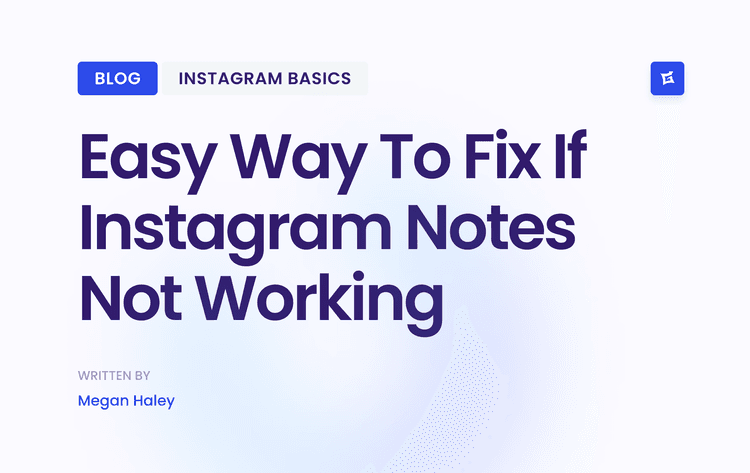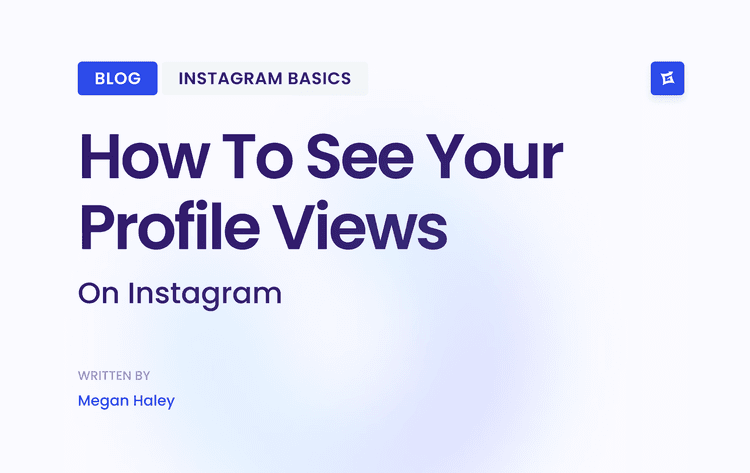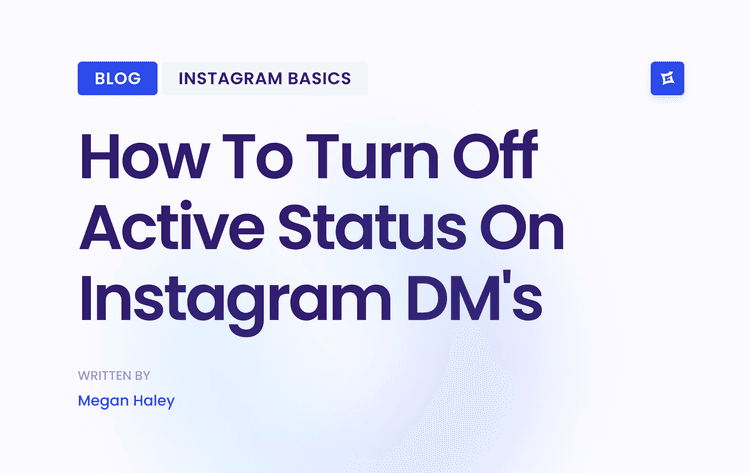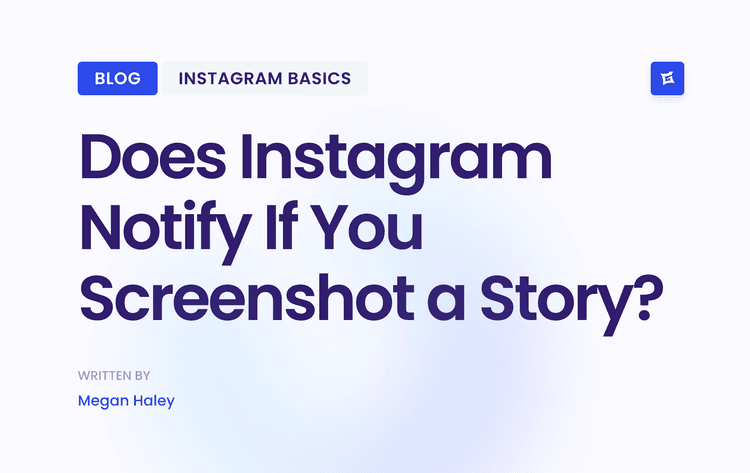Why Measuring Brand Awareness Drives Revenue Growth
Building Your Brand Awareness Measurement Foundation That Works
Before diving into the world of analytics, you need a solid system for measuring your brand awareness. Think of it like building a house: a strong foundation is essential before adding the fancy stuff. Successful marketers get this right before they even start tracking.
This isn’t about chasing vanity metrics. It’s about aligning your awareness goals with your actual business objectives. Instead of aiming for a million followers (which looks cool, sure), maybe focus on increasing brand mentions within your specific target audience. Quality over quantity, my friend.
We'll also look at identifying the right audience segments. Measuring awareness across everyone on Instagram won’t help if your ideal customers are hanging out on TikTok. It’s about finding where your people are.
Finally, setting realistic baseline metrics is key. If you’re a small startup, comparing yourself to Nike is just setting yourself up for disappointment. Benchmark against similar-sized businesses in your niche. This gives you a realistic starting point and helps track real progress. You'll be able to celebrate meaningful wins and adjust your strategy based on solid data.
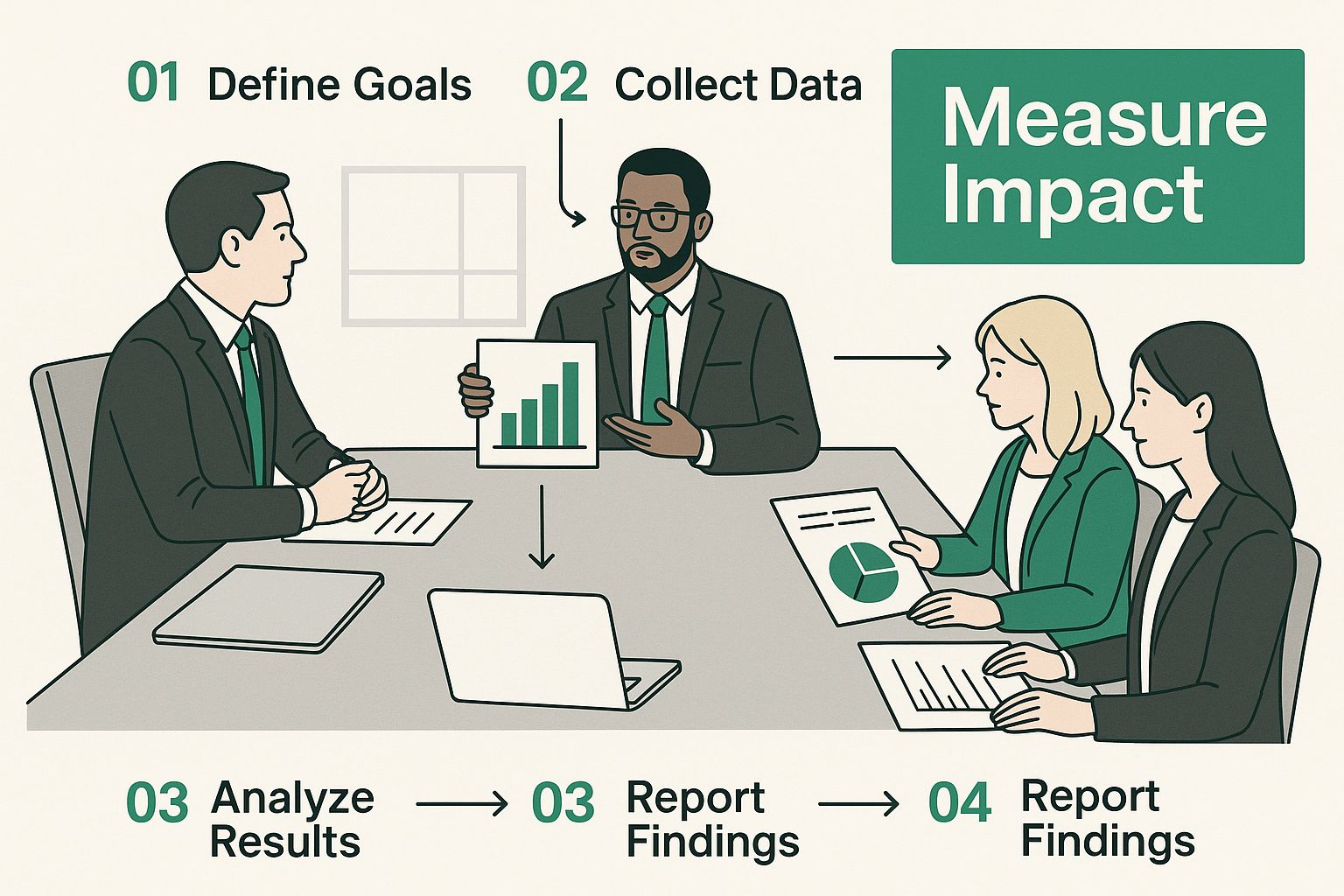
The infographic above shows a team reviewing reports—a visual reminder that analyzing data is a collaborative process. A clear measurement system is crucial for communicating results and making smart decisions.
Defining Your Awareness Goals
Let’s talk goals. What do you want to achieve? Are more people searching for your brand name? Increased engagement on social media? More buzz around your products? These are the goals that move the needle.
Here's an example: imagine you own a local bakery. Your goal might be to increase brand awareness within a five-mile radius. Measuring global brand awareness wouldn't be very useful, would it? Your goals should be specific, measurable, achievable, relevant, and time-bound—the SMART framework.
Identifying Your Target Audience
Knowing who you’re trying to reach is as crucial as knowing what you want to achieve. Different audience segments discover brands through different channels. If you’re targeting Gen Z, focusing only on print advertising probably isn't the best strategy. You’d want to look at platforms like TikTok and Instagram.
Understanding where your audience spends their time—online and offline—is essential. This lets you focus your energy and resources on the channels that will reach the right people.
Establishing Your Baseline and Measurement Frequency
Before you can track progress, you need a starting point. Establishing baseline metrics gives you that foundation. This could be anything from your current website traffic to your social media engagement rates. Think of it as your "before" picture.
How often should you measure? Well, that depends on your resources and the speed of your campaigns. Measuring too often can be overwhelming, while measuring too infrequently can cause you to miss important trends.
Find a balance that works. For a fast-paced social media campaign, weekly or even daily monitoring might be needed. For broader brand awareness, monthly tracking could be enough. The goal is to capture relevant data without burning out your team. This creates a sustainable system that gives you consistent, valuable insights.
To help you get organized, I've put together a handy framework:
Brand Awareness Measurement Framework Setup
Essential components and timeline for establishing your brand awareness tracking system
Defining Goals: During the initial setup, clarify what you want to achieve with brand awareness. It’s important to tie these goals to your business objectives and use the SMART framework.
Identifying Target Audience: Also in the initial setup, determine who you want to reach. Consider factors such as demographics, online behavior, and preferred channels.
Establishing Baseline: Before launching any campaigns, measure your current brand awareness levels. Be sure to use metrics that are relevant to your specific industry and business size.
Measurement Frequency: Tracking progress should be ongoing. Determine how often to measure brand awareness by balancing data needs with the resources available, and adjust the frequency based on the pace of your campaign.
This list summarizes the key elements we’ve discussed, providing a roadmap for setting up your brand awareness tracking. Remember, building a solid foundation is the first step towards effective measurement and meaningful growth.
Mapping Where Your Customers Discover Your Brand
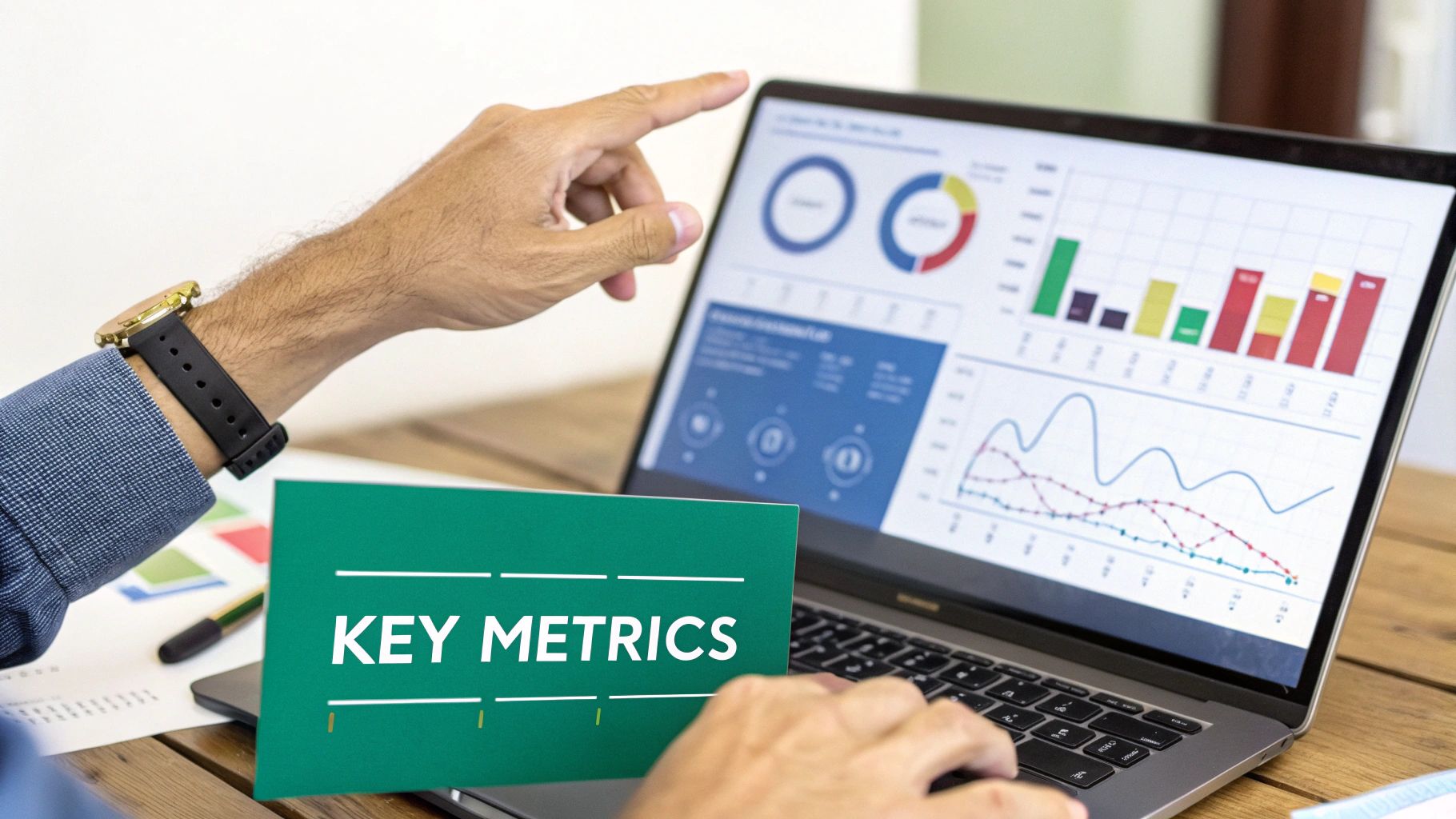
Let's get to the good stuff: figuring out how people are finding you. It's like detective work, uncovering the trails that lead customers to your door. We're going to explore those touchpoints – the places where people interact with your brand – and more importantly, which ones are worth your time measuring. Because let's be honest, not all touchpoints are created equal.
Imagine someone finding your brand through a random Google search. Then think about another person seeing your ad while watching their favorite YouTuber, or maybe hearing about you from a friend. Each of these interactions builds brand awareness, but some pack a bigger punch than others. That's where measuring gets interesting: understanding which channels are driving real engagement.
I’ll be sharing data from successful brands to pinpoint which discovery channels deliver the highest value. We’ll walk through tracking that sometimes messy customer journey, from the initial "hello" to genuine brand recognition. Think of it like mapping a route – understanding the paths your customers take to reach their final destination (your brand!). This helps prioritize your efforts and budget, so you're not just throwing darts in the dark.
Discovering a new brand can happen in so many ways: search engines, TV ads, word-of-mouth, social media...the list goes on. A recent survey found that 32.8% of consumers discover new brands through search engines, with TV ads a close second at 32.3%, and word-of-mouth recommendations trailing just behind at almost 30%. It just shows you how many different avenues people use to find new things. And don't forget about trust! 81% of consumers said they need to trust a brand before they even think about buying. This need for trust, combined with the variety of discovery sources, makes measuring brand awareness a complex but necessary task. It’s important to use a comprehensive approach that considers both your online and offline marketing efforts. Want more insights on brand discovery? Check this out.
Identifying High-Value Touchpoints
Different businesses thrive on different channels. A local coffee shop might rely on foot traffic and word-of-mouth, while a software company might find most of its customers through online search and content marketing. Knowing your audience and your industry is key.
Once you know where your customers are hanging out, you need to see what’s working. Are those website visitors turning into paying customers? Which social media platform brings in the best leads?
Targeted social media strategies can boost your brand awareness. Want to dive deeper? Take a look at our guide on social media targeting strategy. These insights can help you fine-tune your approach, focusing on the strategies that give you a return on your investment. It's all about working smarter, not harder.
Tracking Attribution Across Channels
Figuring out the entire customer journey can be tricky. Someone might see your ad on Instagram, click through to your website, and then…nothing. Until a week later, when they buy something after getting an email. So, which touchpoint gets the credit? That's where attribution modeling helps. It untangles those different interactions and shows you how each one contributes to the final conversion.
Identifying Emerging Channels
The marketing world is always changing. New platforms and channels are popping up left and right. Remember how quickly TikTok took off? Staying ahead of the curve is crucial. This means keeping an eye on new platforms and trying them out to see if they connect with your audience. Being an early adopter can give you a serious edge over the competition. It’s like finding a hidden treasure before everyone else.
Measuring brand awareness is an ongoing process. By understanding the customer journey and tracking how different channels play a role, you can build a strong brand that resonates with your audience and gets results. It’s not about guessing; it’s about knowing.
Tracking Social Media Impact on Brand Recognition That Matters
Forget vanity metrics like follower counts. If you want to use social media to measure brand awareness, you need to look beyond the surface. It’s not just about being on social media, it's about understanding what truly moves the needle for your business.
Think share of voice. How much of the online conversation about your industry is focused on your brand? That’s a powerful indicator of brand recognition. And then there's engagement quality. Likes are nice, but are people talking about your brand and sharing your content? That deeper engagement is a much better sign of potential purchase intent.
I've seen firsthand how influencer marketing can be a game-changer for building brand awareness. The key is finding the right influencers—people who genuinely align with your brand values and connect with your target audience. We'll dig into how to track these campaigns and measure ROI, so you can prove the value of your social media spend.
Social media itself is a vital tool for brand visibility. The impact of social media and influencer marketing on brand awareness is huge. The influencer marketing market is expected to reach $32.55 billion in 2025, up from $24 billion in 2024. This shows how much brands are willing to invest in this area. Around 34% of brands specifically use influencer marketing to increase awareness, leveraging the influencer’s existing audience and credibility. And it's worth remembering that 57% of consumers prefer to buy from companies they feel connected to, demonstrating the importance of shared values. Platforms like Facebook and Instagram are essential for brand visibility, with 76% of small businesses using them to boost brand recognition. Here are more interesting branding statistics.
Monitoring Brand Mentions and Sentiment Analysis
Knowing what people are saying about your brand online is crucial. This is where brand monitoring comes in. We’ll look at advanced techniques that provide actionable insights. You can uncover hidden customer pain points, identify opportunities for product improvement, and even spot new market opportunities, all by tracking brand mentions.
Sentiment analysis adds another layer of understanding. It's not just what people are saying, but how they’re saying it. Are they positive, negative, or neutral? This information helps you refine your messaging, address customer concerns, and make strategic decisions. Imagine launching a new product and seeing a wave of negative sentiment on Twitter. That's a clear sign to investigate and take action before things escalate.
Measuring the Compound Effect of Social Media
The impact of social media on brand awareness isn't always a straight line. It’s the cumulative effect of consistent effort over time. Think of it like building a snowball. Each interaction, each share, each mention adds another layer, making it bigger and more impactful. We’ll explore how social media contributes to overall brand recognition and, ultimately, customer acquisition. It’s about connecting the dots between your social media activities and your bottom line.
This could mean looking at how increased social media engagement translates to more website traffic, or how a successful influencer campaign impacts lead generation. By tracking these connections, you can prove the value of your social media strategy and make better decisions about resource allocation.
Emerging Social Platforms and Evaluating Their Potential
Social media is always evolving. New platforms pop up, others fade away. It’s essential to stay informed and understand which platforms hold the most potential for your brand.
Don't let your competitors get a head start on the next big thing. By developing a framework for evaluating the potential of emerging platforms, you can position yourself for success. This could involve analyzing user demographics, engagement levels, and overall platform growth. It’s about being strategic and adapting your approach as the social media landscape changes. A solid social media analytics guide is vital for accurately tracking your brand recognition efforts.
By focusing on the right metrics and applying your insights, you can harness the power of social media to build a strong brand that truly resonates with your audience and drives real business results. You can also learn more about measuring your social media ROI. Want to dig deeper? Check out our guide on how to measure social media ROI.
Essential Tools for Accurate Brand Awareness Measurement

This screenshot shows a Google Analytics dashboard, offering a glimpse into the wealth of data available. You can track things like where your website traffic is coming from, who your users are, and even what specific pages they're looking at. All of this is gold for understanding how people find and interact with your brand online, building a clear picture of your online community and its contribution to brand awareness.
Let's talk tools. You need solid data without burying your team. Forget about throwing money at every shiny new software; it’s about finding the right mix of free and paid tools that deliver actionable insights. Think of it like building a toolbox—you only want the right tools for the job.
From trusty old Google Analytics to more specialized brand monitoring software, there’s a whole universe of options. I’ll give you the honest lowdown on what’s worth the investment and what you can easily track without spending a dime. Trust me, I’ve seen too many marketers get lost in complex tools they don’t truly grasp. It's all about finding what clicks for your business and your team.
Combining Tools for a Complete Picture
The most effective marketers rarely rely on just one tool. They built a system. Maybe it’s Google Analytics for website traffic, a social listening tool for brand mentions, and a survey platform for direct customer feedback. It’s like piecing together a puzzle; each piece contributes to the overall picture of your brand awareness.
We’ll dive into how to set up and configure these tools for maximum accuracy without piling onto your workload. I’ll even share some tips for automating tasks and integrating data to get the most bang for your buck. Work smarter, not harder, right?
Premium vs. Free: What's Worth Paying For?
Some metrics are readily available for free. Think website traffic, social media engagement, and basic brand mentions – no need to open your wallet. But for deeper insights, premium tools might be worth considering. This is where things like advanced sentiment analysis, competitor benchmarking, and detailed attribution modeling come into play.
I'll break down which premium metrics actually move the needle and which ones you can effectively track without breaking the bank. It boils down to understanding your specific needs and budget.
Real-World Tool Combinations and Pitfalls
To accurately gauge the impact of social media on brand recognition, you need a rock-solid social media analytics framework. This social media analytics guide is a fantastic resource. I’ve seen firsthand how the right combination of tools can unlock a comprehensive view of brand awareness. But I've also seen the flip side – the frustration of poorly chosen tools that drain time and money.
We'll examine real-world examples of tool combinations that work and common traps to avoid. This could involve choosing tools that don’t integrate well or getting sucked into features you’ll never actually use. Learn from other people's mistakes, so you don't have to make them yourself!
Data Integration Challenges and Solutions
Getting data from different tools to work together can be a real pain. Like trying to force mismatched puzzle pieces together. We'll talk about common data integration headaches and offer some practical solutions. This might involve using APIs or checking out third-party integration platforms. The goal is to create a seamless flow of data, so you can see the big picture clearly.
Speaking of seeing the big picture, consistent measurement across platforms is key. This article on measuring social media ROI is worth a look. Think of it as making sure everyone in your marketing ecosystem speaks the same language. It guarantees you're comparing apples to apples and getting a clear understanding of your overall brand awareness. It's about building a system that grows with your business, providing consistent, dependable insights every step of the way.
To help you choose the best tools, I've put together a quick comparison list:
Brand Awareness Measurement Tools Comparison: Comprehensive comparison of popular tools for tracking brand awareness metrics
Google Analytics is a free tool best for basic website analytics. It offers key features such as tracking website traffic, understanding user demographics, and analyzing behavior flow. It supports a wide range of integrations.
Brand24 is a paid tool (with various plans) that is ideal for monitoring online conversations. It includes features like brand mentions, social listening, and sentiment analysis. It also offers API access and integrations with other marketing tools.
SurveyMonkey is a paid tool (with various plans) used for gathering direct customer feedback. It allows users to create and distribute surveys, as well as analyze the results. Integration options include an API and compatibility with CRM platforms.
This list highlights some of the most common tools and their strengths. While Google Analytics provides a solid foundation for free, investing in specialized tools like Brand24 or SurveyMonkey can unlock more granular insights into your brand perception and customer sentiment. Choosing the right tools will depend on your specific goals and budget.
Turning Your Awareness Data Into Strategic Growth Decisions
Raw data is like having ingredients for a cake but no recipe. This section is the recipe. We'll bake those raw metrics into strategic insights that drive real business growth, guide budget allocation, and prove your efforts’ value.
You've collected your data, now what? This is where the magic happens. We’ll explore how to find hidden patterns in your awareness metrics, like bakers checking dough for the right consistency. We’ll see how successful brands identify high-impact opportunities within their data, like chefs adding the perfect spices.
This isn't about gut feelings; it’s about proven frameworks to prioritize awareness-building based on potential ROI. Imagine confidently predicting your awareness trajectory and making data-backed budget decisions. That's the power of smart data analysis.
Unveiling Hidden Patterns and Optimization Opportunities
I've seen brands transform their strategies by digging deeper into their awareness data. One company saw a spike in mentions after partnering with a micro-influencer. They almost dismissed it, but analysis revealed this partnership tapped into a highly engaged niche. This led to a targeted campaign that boosted their conversions. It's about finding those golden nuggets.
Successful brands use data to find opportunities. Maybe website traffic rises when you post a certain type of content. Double down on that format! When choosing brand awareness tools, consider solutions with robust attribution measurement features. These insights refine your strategies and maximize your marketing budget.
Data-Backed Budget Decisions and Stakeholder Buy-In
Imagine walking into a budget meeting with a clear, data-supported picture of your brand awareness trajectory. Show how increased recognition translates to leads, conversions, and revenue. That's how you secure resources.
This isn’t about boring spreadsheets. It’s about a compelling narrative connecting awareness data to business outcomes. Use visuals, examples, and clear takeaways. Tell a story—a story backed by numbers. For example, instead of “brand mentions increased by 20%,” explain how that led to a 10% website traffic boost and a 5% rise in sales. That’s meaningful data.
Actionable Reports and Consistent Improvement
Data without action is useless. Transform insights into concrete steps. We'll discuss creating reports that showcase progress and highlight improvement areas, identifying strategy weaknesses, or uncovering opportunities to amplify your message. Check out our guide on how to measure social media engagement.
Think of reports as a roadmap. They should outline clear next steps and actionable recommendations: testing different social media content, optimizing your website for brand keywords, or exploring new partnerships.
Spotting Emerging Trends and Predicting Awareness Trajectory
The marketing landscape constantly evolves. Analyzing awareness data lets you identify emerging trends and predict where your brand awareness is headed. It's like having a compass guiding your strategy. Anticipate shifts in consumer behavior and proactively adapt.
You might notice increasing interest in a product category or growing preference for a social platform. These are valuable clues for refining messaging, targeting new audiences, and staying ahead of the competition.
Mastering data interpretation rebuilds your awareness metrics into a powerful growth engine. Move beyond vanity metrics and focus on insights that drive real business results. Make data-driven decisions that scale up your brand and achieve your marketing goals.
Your Brand Awareness Measurement Action Plan
Okay, so we've talked about a lot. Let's get down to brass tacks and map out a plan you can put into action this week. This isn't some theoretical exercise; it's about building a measurement system that works for your business, with realistic timelines and benchmarks.
Your First 30 Days: Laying the Foundation
The first month is all about the basics. Nail down your awareness goals and make sure they're directly tied to your business objectives. What are you aiming for? More website traffic? A boost in sales leads? Get specific. Then, figure out who your target audience is. Where do they hang out online? Which platforms are their go-to spots? Finally, establish your baseline metrics. Where are you starting from? This is your point of reference for tracking progress. Think of it like marking your starting point on a map before a road trip.
Your First 60 Days: Building Your Toolkit and Gathering Insights
With your foundation in place, it's time to assemble your measurement toolkit. Start with the freebies: Google Analytics for website data and the built-in analytics on your social media platforms. You can also explore the free versions of social listening tools to see what people are saying about your brand. As you start gathering data, keep an eye out for early trends. Are certain campaigns performing better than others? Which channels are bringing in the most traffic? These early insights will shape your future strategy.
Your First 90 Days: Refining, Analyzing, and Optimizing
By this point, you should have a good chunk of data. Now it's time to roll up your sleeves and dig in. Look for patterns and connections. Is your social media activity impacting website traffic? Are certain keywords driving brand searches? This is where insights transform into action. Refine your campaigns based on what you've learned. Optimize your website content for the keywords people are using. Test different social media strategies. It's an ongoing process of tweaking and improving based on the data you're seeing.
Avoiding Measurement Mistakes and Building Sustainable Systems
One of the biggest traps I see people fall into is trying to track everything at once. It’s easy to get overwhelmed by data. Start small, focus on the metrics that truly matter, and build from there. Create tracking routines that your team can maintain. Maybe it's a weekly check-in on key metrics or a monthly deep dive into specific campaigns. Find a rhythm that works. Consistent measurement, even on a smaller scale, is way more effective than sporadic, intense tracking.
Team Training and Ongoing Optimization
Make sure everyone on your team understands the why behind your measurement efforts and knows how to use the tools. Consistent execution is key for accurate data. And don't just set things up and forget about them. Regularly review your measurement system and adjust as needed. As your business grows and changes, so will your measurement needs. Stay adaptable and tweak your approach to stay ahead of the game.
This is a marathon, not a sprint. Building a solid brand awareness measurement system takes time and effort. But I promise, it’s worth it. When you understand how people are finding and interacting with your brand, you can make smarter decisions, optimize your campaigns, and drive business growth.
Ready to level up your Instagram growth and boost your brand awareness? Gainsty is the AI-powered social assistant you need. We help you organically grow your followers and engagement, without any bots or fake accounts. Learn more about how Gainsty can help you grow your Instagram followers.

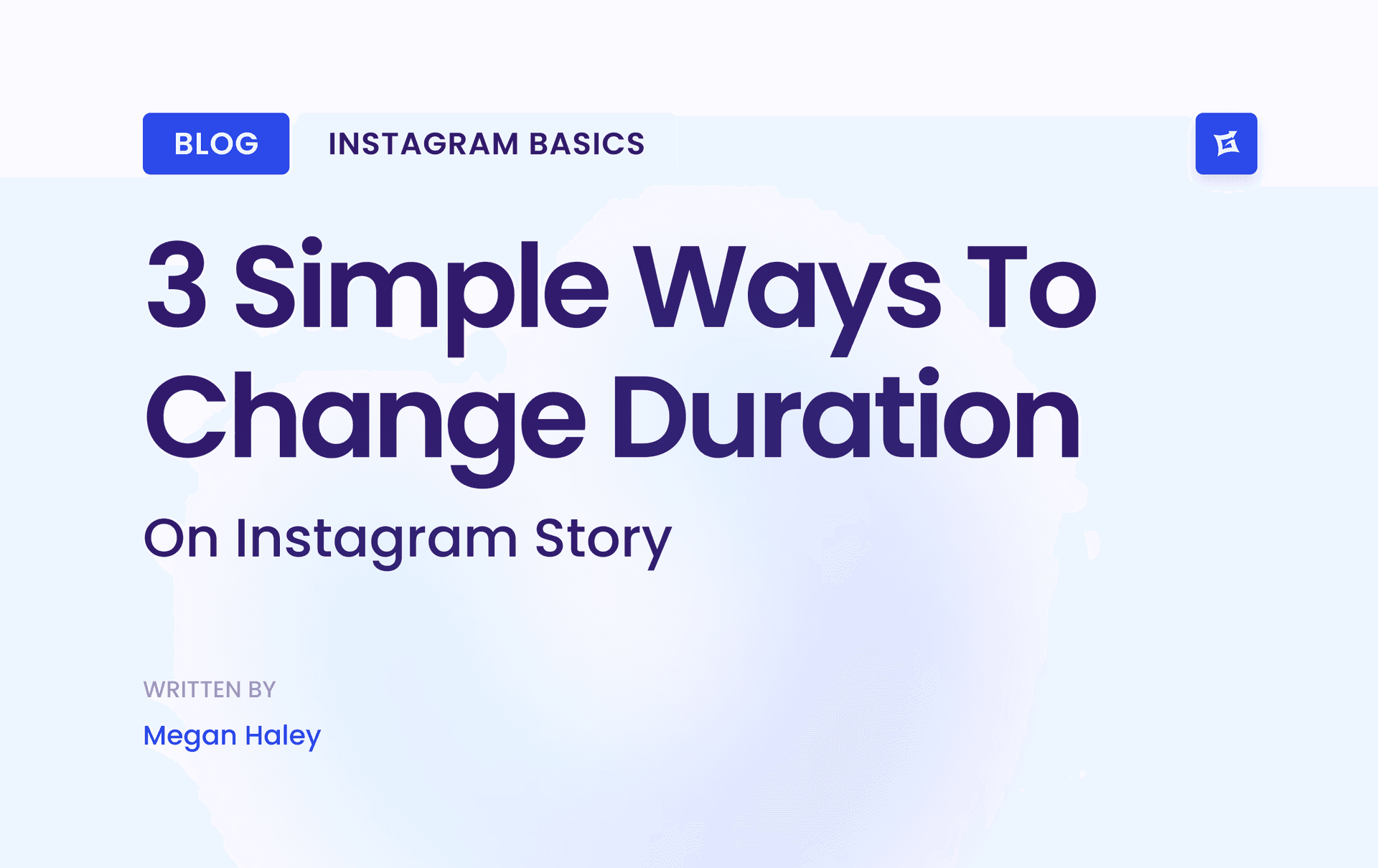
.png&w=1920&q=75&dpl=dpl_9XSWKBjhcBN6v6b1SN7m3p1WWjfr)
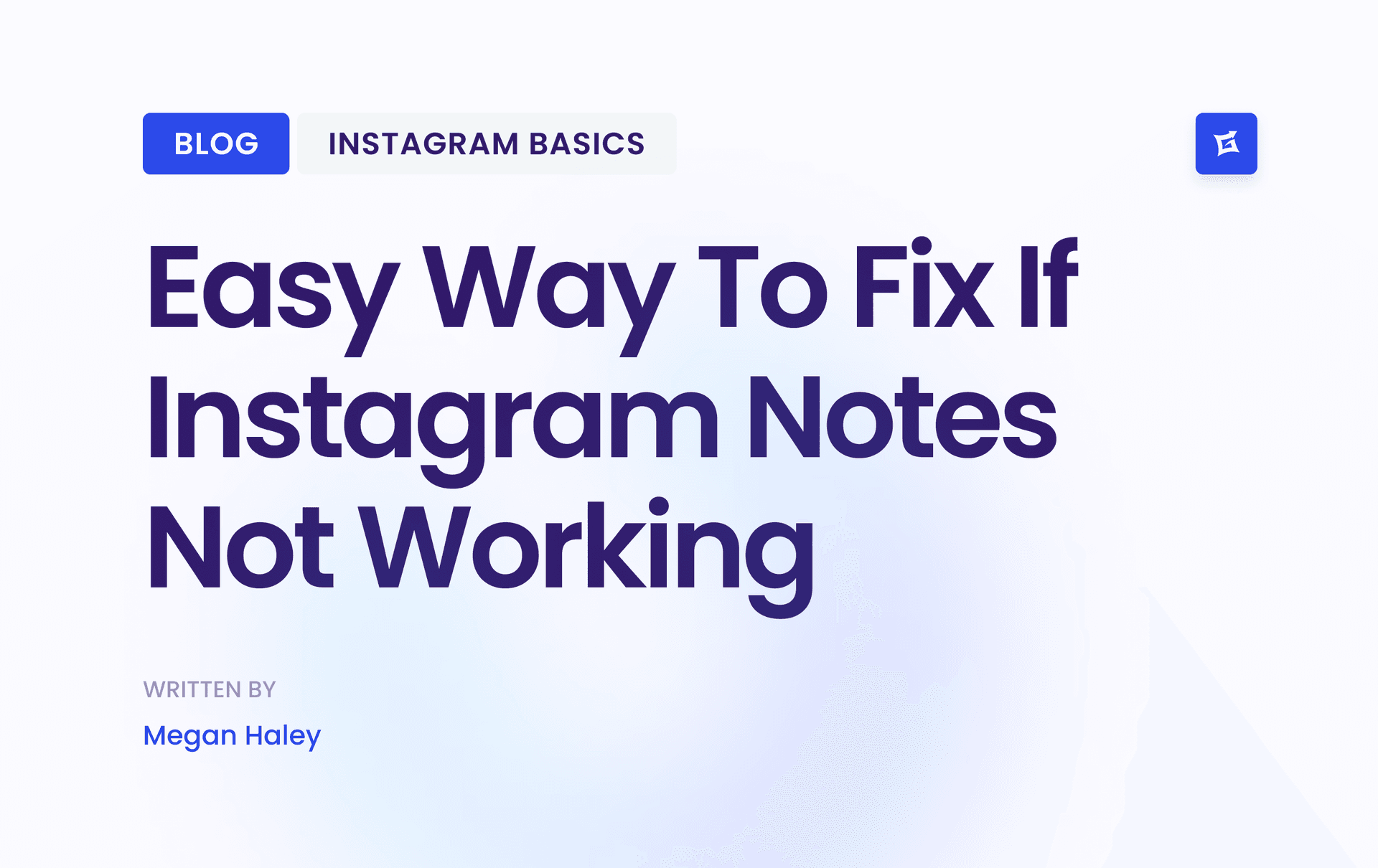
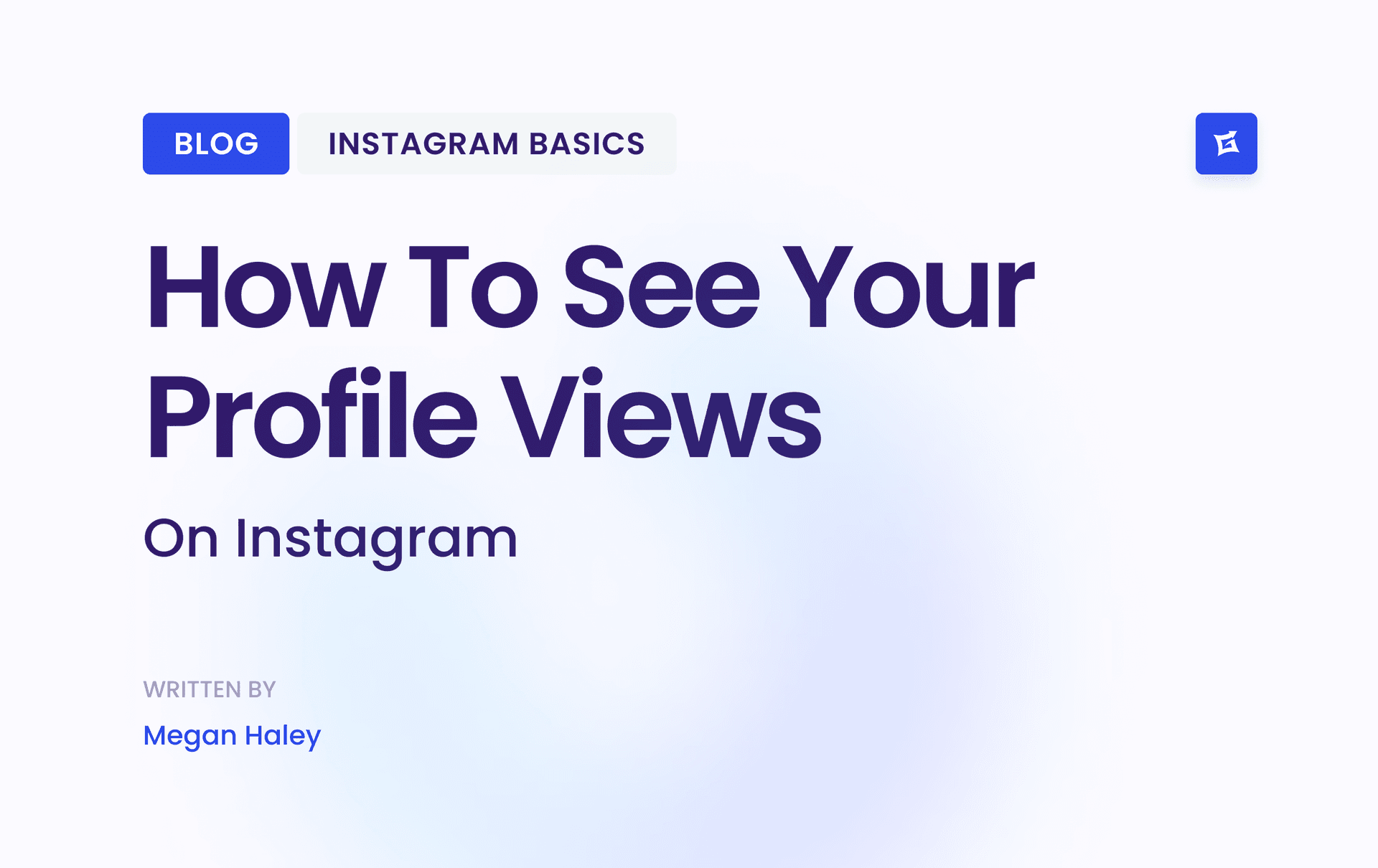
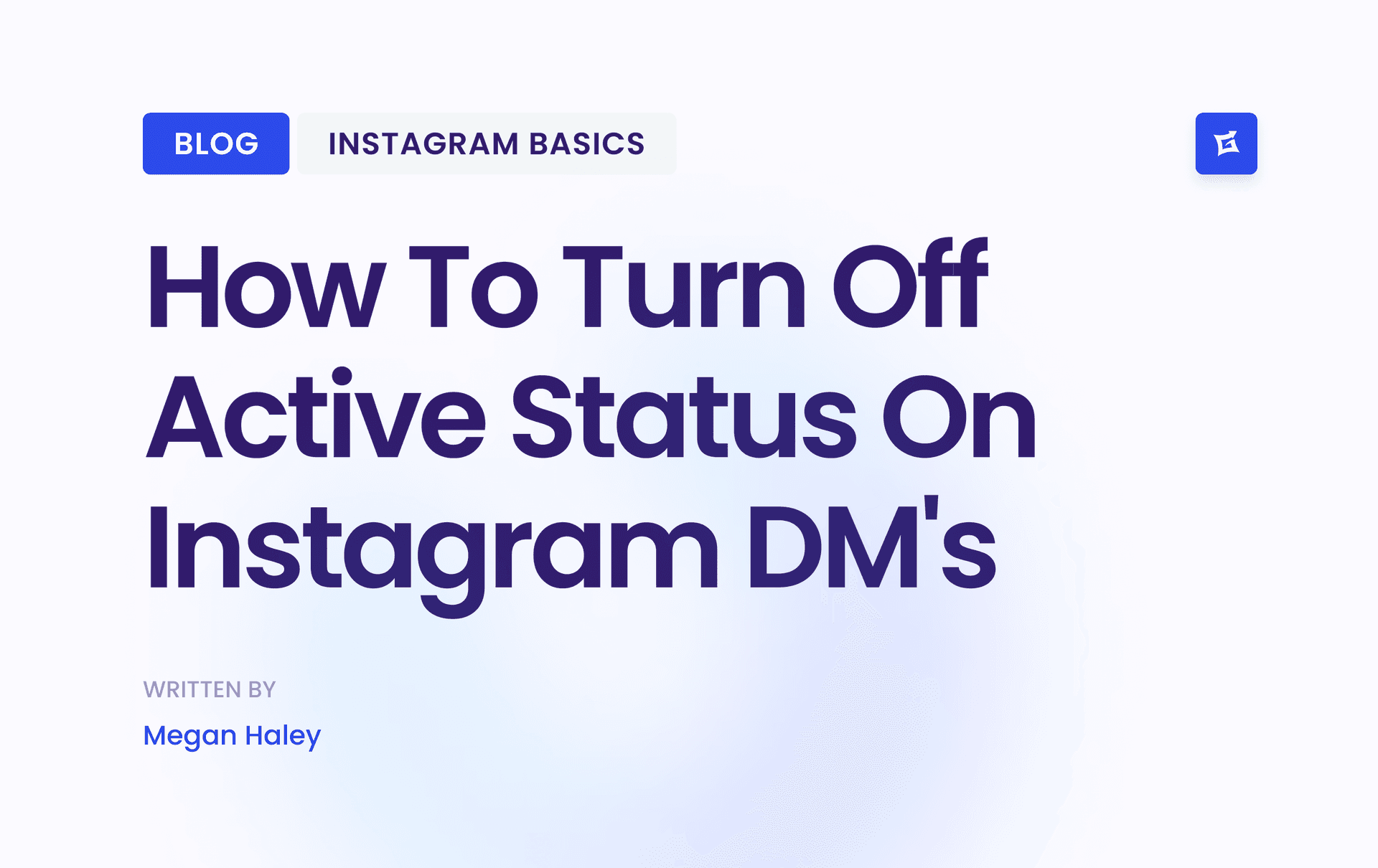




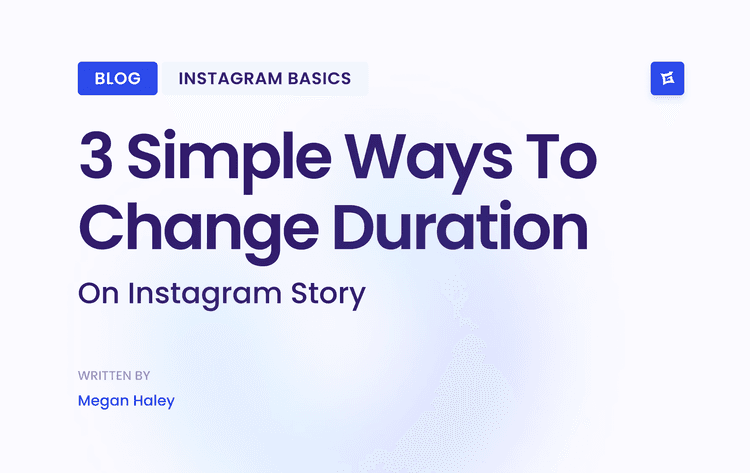
.png&w=750&q=75&dpl=dpl_9XSWKBjhcBN6v6b1SN7m3p1WWjfr)
